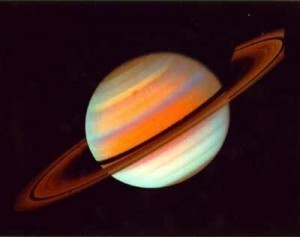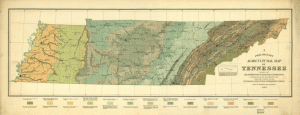What is the Size of Saturn?
In terms of mass, the size of Saturn is equal to 95 Earths (5.6845 x 1026). However Saturn’s  mass is only a third of Jupiter, the biggest planet in the Solar System.
mass is only a third of Jupiter, the biggest planet in the Solar System.
Other Ways to Measure Saturn
Its diameter is around 120,536 km from the equator. From the pole it is 108,728 km. That’s about 9.4 times that of Earth. The volume of Saturn is 8.2713 x 10 (x14). It means you can fit in 764 Earth sized planets in Saturn comfortably. The surface area is 4.27 x 1010 sq km. This is 84 times that of the Earth.
Orbital Figures
The large size of Saturn is matched by its orbital specifications. The aphelion is 1,513,325,783 km or 10.115 958 04 AU (astronomical units). The perihelion is 1,353,572,956 km or about 9.048 076 35 AU.
Astronomers estimate the semi major axis to be 1,433,449,370 km. The orbital period is 29.4571 yr or 10,758.22 days. The synodic period is 378.09 days. It has an orbital speed of 9.69 km/s.
The Rings of Saturn
Saturn’s rings vary in size, the average thickness being 20 meters. They are comprised of water ice (93%) with traces of amorphous carbon and tholin. There are particles on the rings that also vary in size. The smallest is no bigger than a dust speck. The largest one is as big as an average car.
Physical Attributes
Although the size of Saturn is equal to 95 Earths, this pales in comparison to Jupiter. Jupiter has a mass 318 times that of Earth even though it is only 20% bigger.
Saturn’s internal structure is still unknown. The current theory favors a rocky core encompassed by elements like helium and hydrogen. The core is estimated to be 20 times that of Earth. The temperature could reach 11,700 C. Scientists also believe that it generates 2 ½ times more energy than it gets from the Sun.
Cloud Layers on Saturn
Like Jupiter, there is banding in the atmosphere but it is more prominent in the equator. The size of Saturn is equaled by the complexity of its cloud layers. The bottom layer (10 km) is water ice with a temperature of -23 C.
Next is ammonium hydrosulfide ice (50 km, -93 C) and ammonia ice clouds 80 km up. The temperament is believed to be -135 C. Nearly 280 km up are the hydrogen and helium layers.
Also noteworthy are the solar winds which can travel 1800 km per hour. Every 30 Earth years or so, a large patch of white cloud appears close to the equator. Dubbed the Great White Spot, the last one to be seen was in 1994. The next one may come in 2020.
There is also a hexagonal wave pattern at its north polar vortex. The cause is still unknown but it could be related to the elements in the atmosphere itself.
Although the size of Saturn has been well established, there is still much to be learned about the planet. Future explorations will shed more light on its internal composition and those of its rings.




